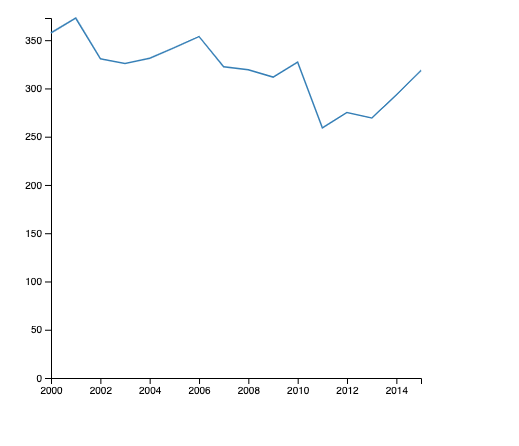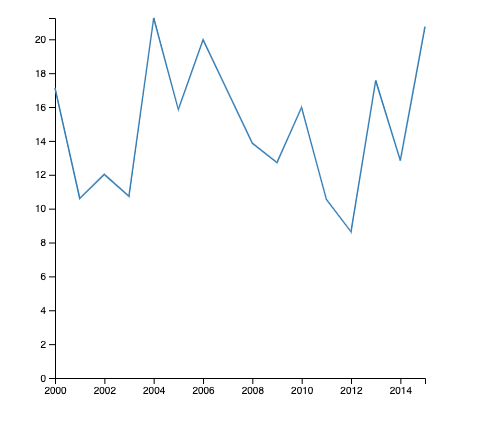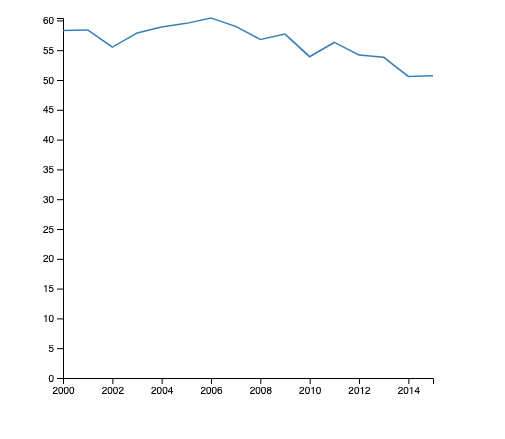Prefer to learn from video? Watch the demo video here.
The size of each circle symbol represents the estimated vegetation cover
per site for the year displayed. The data used provides a coverage value for
each
vegetation
species which was estimated using sum intercept length. For each year, per site,
all
species
estimated coverage values were added together. This value was used in a formula
to
create
the symbol’s radius creating a proportional symbols map. The larger the symbol,
the
greater
estimated vegetation cover. The exact value used for vegetation can be found by
clicking
on
each symbol. Additionally, the color of each symbol represents the amount of
precipitation
received at each site for the year displayed. Generally, the darker the blue,
the
greater
the precipitation value. Feel free to pause the timeline and manually click
through
the
years. You can pan and zoom around the Rio Grande corridor to see all the mapped
features.


